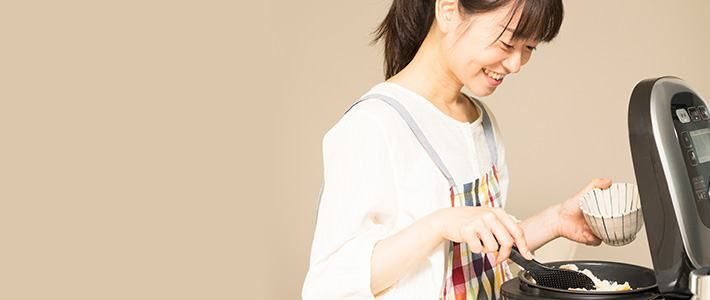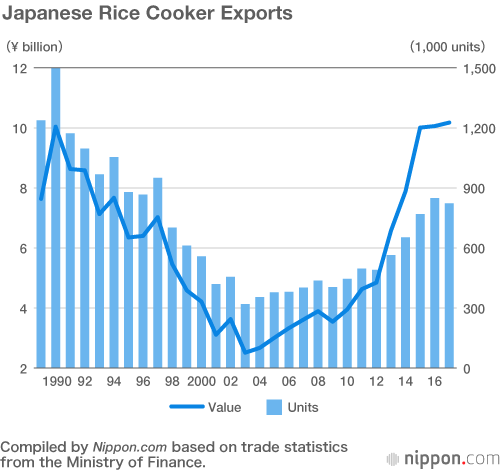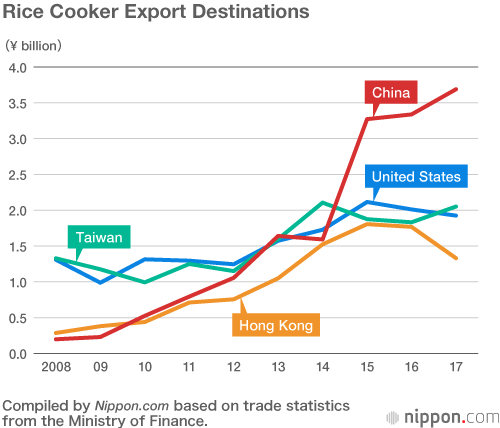
Japanese Rice Cookers a Big Success in China
Economy- English
- 日本語
- 简体字
- 繁體字
- Français
- Español
- العربية
- Русский
In 2014, a year when binge-shopping Chinese tourists were a popular topic of conversation, the news was full of images of people stuffing their carts with Japanese rice cookers in wholesale outlet stores. Subsequently, it was said that this trend would stall—but the popularity of Japanese rice cookers in China continues on.
According to Ministry of Finance trade statistics, the export value of Japanese rice cookers decreased from a previous peak of some ¥10 billion in 1990, but hit bottom at ¥2.5 billion in 2003. Afterwards, gradual growth continued until ¥10 billion was surpassed for three consecutive years from 2015 to 2017. Today things are looking great for Japanese manufacturers of the kitchen appliances.
However, based on the number of units sold, sales have only recovered to about half of what they were at their peak. In other words, exports have shifted to the high-end models. In 1988, when these statistics started being recorded, the average price of a rice cooker taken out of the country was ¥5,460. But this hit the ¥10,000 mark in 2013, and had made it as high as ¥12,367 in 2017. As more of the devices came to include special technologies like induction heating and pressure cooking, overseas consumers started embracing the higher-end models, which promise delicious rice whose taste and texture make it seem like grain fresh from a new harvest, no matter when it is prepared.

As an export destination, China was the largest, accounting for ¥3.69 billion, or 36% of total exports. The value of China’s purchases increased 19-fold in 10 years. Additionally, Taiwan purchased ¥2.05 billion and Hong Kong ¥1.33 billion worth of the appliances. These Chinese rice-culture regions were the top customers. The United States was the top non-Asian target market, in third place at ¥1.93 billion.

Incidentally, looking at average unit values by export destination, the highest was ¥17,267 for Hong Kong; in second place came China, at ¥15,128, and third was Taiwan, at ¥12,943. However, low-priced models with limited functions were popular in the United States, whose average unit value was ¥9,445. The difference in consumer needs between the Chinese regions, which are particular about the taste of their cooked rice, and the United States, where the focus seems to be on economically enjoying Japanese cuisine, is apparent in the numbers.
(Translated from Japanese. Banner photo © Pixta.)